Mpumalanga Mesh:Project Overview
|
Vision To see people in the area of Peables valley economically empowered and cultural and social barriers bridged across the multiple domains of health, education, business and agriculture through the use of low cost wireless connectivity.
Promote the use of wireless mesh networking as a powerful tool to connect people to the internet, local information repositories and voice resources at clinics, farms, homes, and schools. This should be followed by sustainable business models that will allow the continued supply, installation and support of mesh networking technology in the area. |
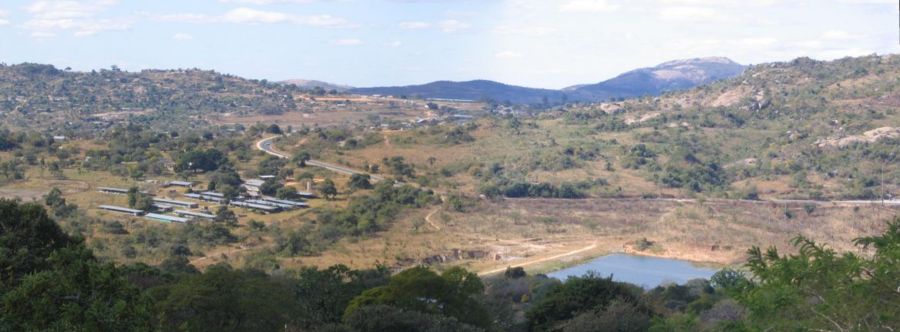
Location
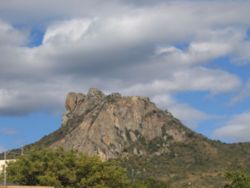
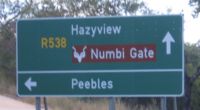
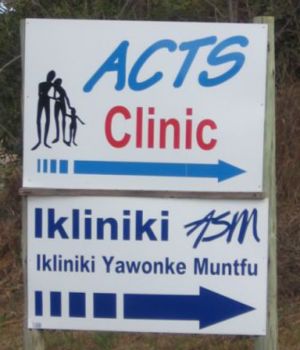
White River is a medium sized town about 20 minutes north of Nelspruit, the capital of Mpumalanga Province. Peebles Valley and the Masoi Tribal land is located 20 minutes to the North East of White River along the road leading to the Kruger National Park's Numbi gate.
The area is hilly with some large granite outcrops. The Peebles Valley stretches from the ACTS clinic and divides the commercial farms from the Masoyi area. Commercial farming in the broader area is predominately timber but fortunately along the valley there is no timber farming (this would pose a connectivity problem and impact line of sight requirements). The farmers as a community are already well connected (organisationally, not in terms of Internet connectivity) through the Jock of the Bushveld conservancy.
The ACTS clinic is located at the beginning of the Valley. ACTS stands for AIDS Care Training and Support Clinic. They provide medical services to AIDS patients, counselling, testing and antiretroviral (ARV) treatment. The clinic has gained a reputation within the community with many people coming from outside of the Masoyi area for treatment. They are have been selected for managing ARV roll-out because of their well developed counselling, testing and support group networks. Currently they have about 600 people on ARVs with this figure likely to grow. These treatments are being monitored by researchers at WITS University.
The Masoyi area runs along the right hand side of the valley. We identified approximately 10 schools, with two identified as being high schools with computer facilities. The project team has good links to a teacher in one of these schools who is in charge of the computer lab. In the area there is also a teachers training centre, government hospital and various government clinics in the area. The ACTS clinic runs a hospice close to one of the Government clinics.
Situation in the Community
The community is underserviced. Most roads remain unpaved with the main road having been rebuilt after the floods of 2000. Electricity is available within the community. The community is poor and has been hugely impacted by AIDS. Losing salaried member of households through AIDS has a big impact on extended families. There is also the associated superstition and secretiveness around AIDS which does not help improve the situation.
ACTS clinic
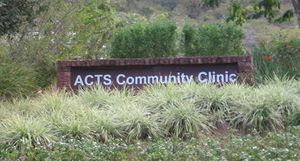
The clinic is a non-profit organisation established to provide AIDS care in the Masoyi area. It was initially sponsored by GlaxoSmithKline. The clinic has two doctors, an on-site hospice, training centre and accommodation for people on training courses.
A number of staff have been trained to provide pre-test and post-test counselling. This leaves the doctors free to focus on the medical aspects of treatment. The clinic operates in many ways like a private doctors practice. They charge consultation fees and patients on medical aid are charged accordingly. They however usually waive all fees as soon as it is established that a patient is suffering from AIDS. The clinic is relatively sophisticated in their use of computers: they run practice management software, are connected to the Internet via VSAT for their research with WITS. They also have some custom MS Access based applications written internally to track patient statistics.
Proposed Solution
Deploy a mesh network within the Peebles Valley, run training courses to transfer skills on mesh set-up and installation, work together with the clinic staff using Free Attitude Interviews (FAI) to discover applications and uses that work for the staff.
What problem is being addressed ?
The main thrust is to connect the clinic to its community hospice and thus allow them to extend their computer facilities to the hospice (practise management software and statistics gathering). This is most easily achieved through a wireless network and more specifically a mesh because of the terrain.
A mesh network requires a number of nodes in areas not owned by the clinic but that are part of the community: schools and farmers. The main thrust of the research question is to implement the network in such a way that the firstly the clinic and secondly the community have taken ownership of the network. That they have created systems that ensure that the infrastructure is maintained and expanded by the users of the network.
Technology Explained
A wireless network involves radios and aerials. The radios broadcast and receive signals which are boosted and directed by the aerials. Anyone with a radio can access the network. The spectrum used for Wifi required line-of-sight for connectivity. The routes between sites are also hard coded or manually adjusted in each device. This makes it technically difficult on two levels. Firstly, you need a deeper understanding or the radio spectrum and the operation of radio wave and secondly, configuration of the equipment requires a higher level of skill.
A mesh network uses the same infrastructure: aerials and radios. But at the network level it operated differently. The network simply requires that each node can see at least one other node (i.e. it can be part of the network) and that each node can send traffic to any node on the network (ie there are no islands which are not connected to the whole). In a mesh network this problem is solved at the software level. As long as your node can see another node it will be able to determine the routes to follow. The also allows for a level of self healing and thus less maintenance. If for example a truck parks in from of the node or a tree grows up over time and block the signal to another node then as long as the node can see an alternate node it can route traffic via this new path. On a conventional wireless network this would need to be manually configured.
The choice of mesh in the Peebles Valley was made for these reasons: Hilly terrain that requires a number of hops to reach the destination Low skilled network operators Changing conditions in the environment. Nodes that disappear through neglect, theft, obstruction.
Social Challenges
There are a number of social challenges:
Firstly, for the the network to operate to service firstly the clinic and secondly the community it requires the cooperation of teachers in schools and of farmers. They all have there own agenda's there own perceptions of their expected level of involvement and their expectation of how aid is given to them.
In the school we are concerned about a hand-out mentality that will not see the school working hard to be involved in the extension of the mesh but simply being involved as long as it takes to link the school to the Internet. There is also the risk of our contact at the school wanting to be seen as being in charge and not wanting to work together with schools in the community.
To address that we are looking at bringing the school pupils into the process from the beginning and teaching them how to install and configure equipment.
Secondly, with the farmers we are confident that it will be easy to sell them the concept of Internet connectivity. However, for the network to work for them will require that they connect to schools in the Masoyi area. We are not certain about the relationship between these two groups. Considering the crime levels there is the risk that there is not a good level of trust.
Our strategy is to involve people from both groups during training workshops. Which at the very least would allow relationships to be established.
Lastly, this is not the primary focus of the ACTS clinic so there will always be the risk that people are redeployed.
However, our main contact in the clinic is an electrical engineer by profession and the clinic itself has proved that they are a teaching organisation (their previous gardener now runs the reception).
Technical Challenges
Mesh networks are a new phenomena with the software sometimes not yet at the level required for the mesh to operate well. There is the risk that in this project we will discover the limitations of the technology and have to spend time compensating for that.
Some of the endpoint nodes we have identified require many hops. This requires many nodes. This is both a social and technical challenge. Social in that the project needs to bring each of those players on board and technical in that each of those nodes needs to be built, deployed and maintained.
There is also the risk of theft. The node equipment has very little commercial resale value in the community, although there seems to be wifi operating in the Nelspruit, White River area. However, that never seems to be a consideration of petty thieves. Hopefully deploying the equipment in established locations: schools, shops, private homes and not simply in the open will help secure the equipment.
Equipment Ownership
As the objective is to create a community based network where the network is seen as a community asset so therefore some of the equipment at key nodes should belong to the community. Official ownership will be with the ACTS clinic until such time as a more formal structure for ownership of key mesh equipment can be established.
As the mesh grows individual node owners will own their own equipment. So a farmer or school will be the owner of that equipment and it will form part of the mesh. It is hoped that farmers will partner with institutions such as schools in which case the partners will define ownership relationships.
The project does not envision supplying any equipment to farmers unless they are located such that having equipment on their farm is critical to creating the mesh. In such as case we would look at funding that node if the project has to but the project will still attempt to have the farmer install his/her own equipment.
Intellectual Property
The project will release all work under a suitable Open Source license. This work includes documentation and results of the research.
The project will not be developing any independent software but will be using other freely available mesh software. In the case that software is improved or modified it will be released under the license of the original software project to ensure that it can be included in future releases of that software.
Sustainability
A key component to sustainability will be involvement of the farmers, Bible colleges, etc. within the Peebles Valley. The project will draw in the farmers for the following reasons: 1) they are a source of skills, 2) they have finances to pay for Internet connectivity and 3) that once they become users they are likely to become dependent on the mesh and thus ensure its ongoing success.
Part of the program will be to educate participants from the start so that they can extend the reach of the mesh. Included will be education of pupils from the partner schools. This education is designed to ensure that enough skills are available in the valley to repair nodes, set-up new nodes, manage the mesh and train others.
A key component to the sustainability is that the project manager as the ACTS clinic is a qualified electrical engineer. We are therefore confident that it will not be difficult to educate him on the workings of the mesh network. He has already demonstrated his excitement and commitment to the project by spending a Saturday with the project leaders evaluating high sites. He is involved in training staff and is extremely practical so will be invaluable in erecting high sites.
Pros and Cons of the system
First considering some positive aspects of the mesh. Firstly the clinic is already using IT infrastructure in the following areas: ARV monitoring, clinic management and accounts. Farmer, bible colleges, etc. in the community already use the Internet for email etc. but usually at great cost because of the limited choice of connectivity options. The partner schools already has a lab that has in the past been connected to the Internet. So there is already a body of people who have demonstrated the willingness or need to use the Internet who we feel would be willing the use a mesh if it provide always on and lower Internet connectivity costs.
The potential problems we see are the following. There is the risk that the effort to manage or be part of the mesh may be more expensive then direct connection especially in the case of the lack of good neighbourliness from any mesh participant. The clinic, although they currently use IT extensively, may in fact not need to extend that usage beyond the main clinic. The risk with the schools we feel is that there is a general hand-out mentality and that there will not be the will to learn, extend the network or integrate this into the curriculum. Another large risk is the sustainability of the network not from the mesh side but from the side of financing the hop onto the Internet itself.
Backhaul Connectivity

The connectivity to ACTS is provided via Telkom VSAT. ACTS uses the connection as part of their involvement in ARV roll-out for the Right To Care group. They have an Internet based application for capturing details of patients for monitoring and evaluating patients receiving ARVs